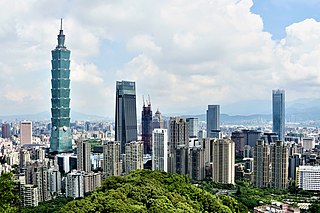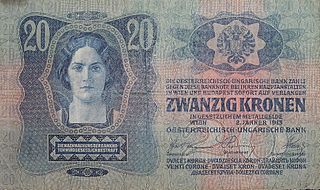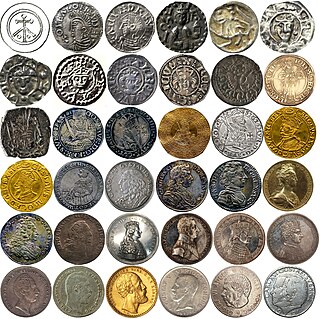
AB SKF is a Swedish bearing and seal manufacturing company founded in Gothenburg, Sweden, in 1907. The company manufactures and supplies bearings, seals, lubrication and lubrication systems, maintenance products, mechatronics products, power transmission products, condition monitoring systems and related services globally.
Swedish iron ore was an important economic and military factor in the European theatre of World War II, as Sweden was the main contributor of iron ore to Nazi Germany. The average percentages by source of Nazi Germany’s iron ore procurement through 1933–43 by source were: Sweden: 43.0 Domestic production (Germany): 28.2 France: 12.9. Within the German military the Navy was most dependent on Swedish steel as an absolute necessity to the German war effort, according to their grand admiral. It has also been argued that the Swedish export helped prolong the war.

The Rust Belt, formerly the Steel Belt, is a region of the Northeastern United States, Midwestern United States, and the very northern parts of the Southern United States. It includes Upstate New York, Pennsylvania, Ohio, West Virginia, Indiana, Illinois, the Lower Peninsula of Michigan, the Iron Range of Minnesota, southeastern Wisconsin, and small parts of Kentucky, Maryland, New Jersey, and the St. Louis metropolitan area in Missouri. The biggest cities in the Rust Belt include Allentown, Baltimore, Buffalo, Chicago, Cincinnati, Cleveland, Detroit, Milwaukee, Philadelphia, Pittsburgh, Rochester, St. Louis, Syracuse and Toledo. Smaller cities in the Rust Belt include Binghamton, Gary, Gloversville, Huntington, Scranton, Trenton and Youngstown.

Rail transport in Sweden uses a network of 10,912 kilometres (6,780 mi), the 24th largest in the world. Construction of the first railway line in Sweden began in 1855. The major operator of passenger trains has traditionally been the state-owned SJ, though today around 70% of all rail traffic consists of subsidised local and regional trains for which the regional public transport authorities bear responsibility. Passenger traffic has increased significantly since the turn of the millennium, and in 2019 Sweden ranked eleventh in the world and number three in the European union, as well as number six in the world when measured by passenger share.

The economic history of Brazil covers various economic events and traces the changes in the Brazilian economy over the course of the history of Brazil. Portugal, which first colonized the area in the 16th century, enforced a colonial pact with Brazil, an imperial mercantile policy, which drove development for the subsequent three centuries. Independence was achieved in 1822. Slavery was fully abolished in 1888. Important structural transformations began in the 1930s, when important steps were taken to change Brazil into a modern, industrialized economy.

Until the early 19th century, Germany, a federation of numerous states of varying size and development, retained its pre-industrial character, where trade centered around a number of free cities. After the extensive development of the railway network during the 1840s, rapid economic growth and modernization sparked the process of industrialization. Under Prussian leadership Germany was united in 1871 and its economy grew rapidly. The largest economy in Europe by 1900, Germany had established a primary position in several key sectors, like the chemical industry and steel production. High production capacity, permanent competitiveness and subsequent protectionist policies fought out with the US and Britain were essential characteristics.

A finery forge is a forge used to produce wrought iron from pig iron by decarburization in a process called "fining" which involved liquifying cast iron in a fining hearth and removing carbon from the molten cast iron through oxidation. Finery forges were used as early as the 3rd century BC in China. The finery forge process was replaced by the puddling process and the roller mill, both developed by Henry Cort in 1783–4, but not becoming widespread until after 1800.

The Western Australian economy is a state economy dominated by its resources and services sector and largely driven by the export of iron-ore, gold, liquefied natural gas and agricultural commodities such as wheat. Covering an area of 2.5 million km2, the state is Australia's largest, accounting for almost one-third of the continent. Western Australia is the nation's fourth most populous state, with 2.6 million inhabitants.
The industrialization of China refers to the process of China undergoing various stages of industrialization and technological revolutions. The focus is on the period after the founding of the People's Republic of China where China experienced its most notable transformation from a largely agrarian country to an industrialized powerhouse. Although the Chinese industrialization is largely defined by its 20th-century campaigns, especially those motivated by Mao Zedong's political calls to "exceed the UK and catch the USA", China has a long history that contextualizes the proto-industrial efforts, and explains the reasons for delay of industrialization in comparison to Western countries.
Before 1800 A.D., the iron and steel industry was located where raw material, power supply and running water were easily available. After 1950, the iron and steel industry began to be located on large areas of flat land near sea ports. The history of the modern steel industry began in the late 1850s. Since then, steel has become a staple of the world's industrial economy. This article is intended only to address the business, economic and social dimensions of the industry, since the bulk production of steel began as a result of Henry Bessemer's development of the Bessemer converter, in 1857. Previously, steel was very expensive to produce, and was only used in small, expensive items, such as knives, swords and armor.

Oregrounds iron was a grade of iron that was regarded as the best grade available in 18th century England. The term was derived from the small Swedish city of Öregrund, the port from which the bar iron was shipped. It was produced using the Walloon process.
Proto-industrialization is the regional development, alongside commercial agriculture, of rural handicraft production for external markets. Cottage industries in parts of Europe between the 16th and 19th centuries had long been a niche topic of study. In the early 1970s, some economic historians introduced the label "proto-industrialization", arguing that these developments were the main cause of the economic and demographic growth and social change that occurred in Europe over this period, and of the Industrial Revolution that followed. Several theories were proposed to explain the mechanisms of this proposed causation.

The recordkeeping and development of the economic history of Taiwan started in the Age of Discovery. In the 17th century, the Europeans realized that Taiwan is located on the strategic cusp between the Far East and Southeast Asia. Two main European empires that competed to colonize it were the Dutch and Spanish Empires. Taiwan also became an intermediate destination for trade between Western European empires and East Asia states. The history of Taiwan as a colony of the Dutch Empire, Kingdom of Tungning, Qing China, and Empire of Japan between 1630 and 1945 was based heavily on economics.

The economy of Sweden is a highly developed export-oriented economy, aided by timber, hydropower, and iron ore. These constitute the resource base of an economy oriented toward foreign trade. The main industries include motor vehicles, telecommunications, pharmaceuticals, industrial machines, precision equipment, chemical goods, home goods and appliances, forestry, iron, and steel. Traditionally, Sweden relied on a modern agricultural economy that employed over half the domestic workforce. Today Sweden further develops engineering, mine, steel, and pulp industries, which are competitive internationally, as evidenced by companies such as Ericsson, ASEA/ABB, SKF, Alfa Laval, AGA, and Dyno Nobel.

This article covers the Economic history of Europe from about 1000 AD to the present. For the context, see History of Europe.

The 1973–1975 recession or 1970s recession was a period of economic stagnation in much of the Western world during the 1970s, putting an end to the overall post–World War II economic expansion. It differed from many previous recessions by involving stagflation, in which high unemployment and high inflation existed simultaneously.

The economy of Austria-Hungary changed slowly during the existence of the Dual Monarchy, 1867–1918. The capitalist way of production spread throughout the Empire during its 50-year existence replacing medieval institutions. In 1873, the old capital Buda and Óbuda merged with the third city, Pest, thus creating the new metropolis of Budapest. The dynamic Pest grew into Hungary's administrative, political, economic, trade and cultural hub. Many of the state institutions and the modern administrative system of Hungary were established during this period.

The economic history of Sweden, since the Iron Age, has been characterized by extensive foreign trade based on a small number of export and import commodities, often derived from the widely available raw materials iron ore and wood. An industrial expansion in the latter half of the 19th century transformed the society on many levels. Natural-resource-rich regions benefited from the First Industrial Revolution. A growth surge in Sweden later benefited virtually the whole country during the Second Industrial Revolution. It fostered a broad export-oriented engineering industry with companies such as LM Ericsson, Asea, Alfa Laval, Aga, Electrolux, SKF and Volvo reaching well established positions on the global market and becoming drivers of GDP growth. In addition to engineering, the pulp and paper, steel, and chemical industries developed to reach international prominence. By the 1970s, Sweden had become one of the wealthiest nations of the world. The growth slowed down during the following decades, which were characterized by public deficits and structural change.

The relation between Germany and Sweden has a long historical background. The relationship is characterized by exchanges between the neighboring countries of the Baltic Sea in the 14th century. Both countries are members of the European Union, NATO, United Nations, OSCE, Council of the Baltic Sea States and the Council of Europe. Germany has given full support to Sweden's membership of the European Union. Germany strongly supported Sweden's NATO membership during the latter's accession process. Germany has an embassy in Stockholm. Sweden has an embassy in Berlin.

The economic history of Sweden's Age of Liberty examine the changes to the Swedish economy between 1718 and 1772. The economic factors that contributed to the fall of the Swedish Empire and the shift away from absolutism, as well as the legacy of the era in terms of the nation's economic history after 1772 are also noted.





















